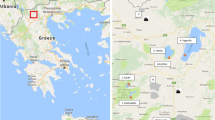Summary
The work describes the selection of an activable tracer that could be used to study dispersion patterns in an English estuary and was carried out in connection with the development and testing of a particle-tracking computer model. Understanding estuarine dynamics will assist in the decision-making process for estuarine management and in contingency planning. Neutron activation analysis (NAA) has been used to characterize the concentration and natural variation of 40 trace elements in suspended particulate matter and inter-tidal bed sediment in order to identify a suitable tracer. Results have shown that europium, terbium and ytterbium would be suitable to use in a tracer study as they have low background concentrations in sediments and little variability, (Eu: 1.31 mg . kg-1±13%, Tb: 0.90 mg . kg-1±16% and Yb: 2.91 mg . kg-1±18%). The ratios of these elements are constant throughout the estuary and experiments have shown that increases in concentration of any of these elements due to the addition of artificial elemental tracer could be quantitatively determined by changes in the ratio constant.
Similar content being viewed by others
Author information
Authors and Affiliations
Rights and permissions
About this article
Cite this article
Lloyd, A., Parry, S., Lynn, N. et al. Development of an elemental tracer using neutron activation analysis for application in an estuarine environment. J Radioanal Nucl Chem 264, 83–90 (2005). https://doi.org/10.1007/s10967-005-0678-9
Issue Date:
DOI: https://doi.org/10.1007/s10967-005-0678-9




